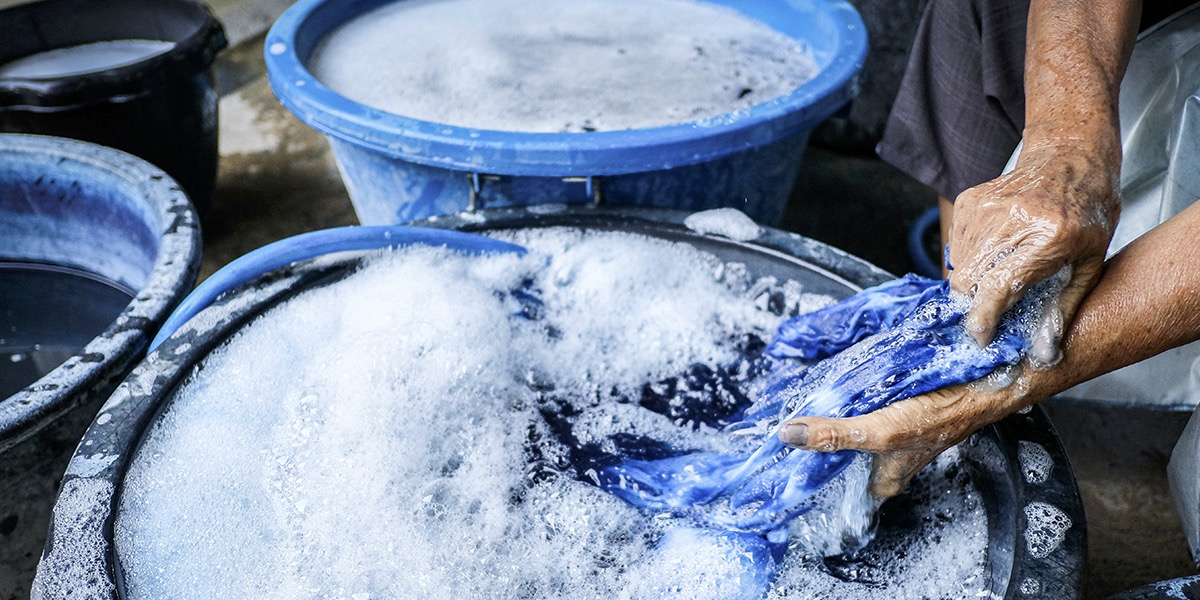Sustainability and looming water shortages are consistently in the news. Surprisingly, the garment dyeing process appears to be staying out of the limelight. On a global scale, the textile industry uses six to nine trillion liters [1] of water per year solely for the dyeing of clothing. This is an enormous amount of waste that should be addressed with greater urgency.
As a world leader in predictive analytics, First Insight has identified three areas in which our solutions can help make the retail industry more sustainable when dyeing clothing.
1. Early Digital Testing to Optimize Inventory and Reduce Waste
With in-store testing still a common practice in the retail industry, many companies are likely unintentionally contributing to our environmental crises. Companies must produce a large volume of test product to ship to their chosen storefronts. With an industry average product failure rate well over 50%, the majority of this product will be withdrawn and often damaged before disposal so it cannot be resold. Retailers that deploy digital testing in place of store testing can gather predictive data prior to development and production. Those that test with CADs and other digital samples can eliminate producing any physical samples at all for testing. Our predictive analytics software supports testing of the items before they are manufactured. As a result, retailers can reduce sample production costs by 70%, saving businesses money and eliminating unnecessary fabric dyeing before it occurs.
2. Reduction of Chemicals
Retail sustainability has numerous components, but one consequential area is the use of chemicals in the garment dyeing process. According to the World Bank, the textile dyeing process alone uses seventy-two [2] toxic chemicals; once these chemicals have been utilized to their maximum potential, they are disposed of. Chemical disposal has a negative impact on our rivers, wildlife, and ecosystems. Businesses utilizing predictive analytics can minimize this environmental impact by testing an assortment’s color offerings and selecting the colorways that the data shows to be more likely to win. The result: less inventory waste and a significant decrease in the amount of chemicals used.
3. Water Waste
Twenty-one trillion gallons [3]. This is the total quantity of water used in the retail industry each year, from early manufacturing through the dyeing process. Producing a single pair of jeans consumes two thousand gallons of water. Predictive analytics can assist manufacturers and retailers in effective planning and selection to increase their new product success rates and substantially reduce this amount of water waste. They can then credibly claim and communicate that they are operating more sustainably, giving consumers confidence in their retail shopping decisions.
Today, younger generations are supporting brands that value sustainability in both word and action. By incorporating predictive analytics, businesses will be able to stay ahead of the ever-changing industry and consumers. All retailers, large and small, must make the effort to transform the garment dyeing process. Businesses will not only save money and time, but they will also save the environment along the way.
Want to learn more about retail predictive analytics? Check out our complete guide and case studies. Benefits of Retail Predictive Analytics
Also: Learn more about sustainability and today’s consumers in our latest research report, The Sustainability Disconnect Between Consumers & Retail Executives.
References & Citations
[1] O Ecotextiles (and Two Sisters Ecotextiles). “Carbon Footprint of the Textile Industry.” OEcotextiles, 31 Oct. 2011, https://oecotextiles.blog/2009/05/25/carbon-footprint-of-the-textile-industry/.
[2] South Asia Environment And Water Resources Unit. https://documents1.worldbank.org/curated/en/614901468768707543/pdf/922610WP0P11950DEL0FOR0GREEN0GROWTH.pdf.
[3] Regan, Helen. “Asian Rivers Are Turning Black. and Our Colorful Closets Are to Blame .” CNN, Cable News Network, 29 Sept. 2020, https://www.cnn.com/style/article/dyeing-pollution-fashion-intl-hnk-dst-sept/index.html.
















